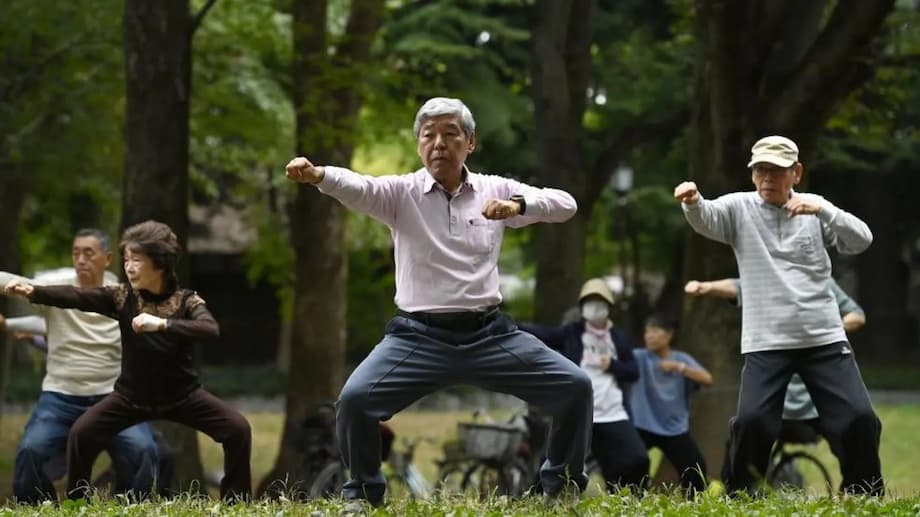An aging milestone for Japan
Japan has set a new longevity milestone. The country now counts 99,763 residents aged 100 or older, according to government figures compiled ahead of Respect for the Aged Day in mid September. It is the 55th straight year the total has reached a record high. Women account for about 88 percent of centenarians, a pattern seen year after year. The latest tally lists 87,784 women and 11,979 men. The oldest person is Shigeko Kagawa, a 114 year old woman from Yamatokoriyama in Nara Prefecture, while the oldest man is Kiyotaka Mizuno, 111, from the coastal city of Iwata in Shizuoka Prefecture.
- An aging milestone for Japan
- Why Japan leads the world in longevity
- A decades long climb and where centenarians live
- Counting challenges and data reliability
- Life at 100, and why women far outnumber men
- An aging nation faces economic and social strains
- Lessons and limits from Okinawa
- What Japan is doing now
- Key Points
On a population basis, Japan now has an average of 80.58 centenarians per 100,000 residents. The geographic spread is uneven. Rural Shimane Prefecture leads the nation with 168.69 per 100,000 for the 13th consecutive year. Urbanized Saitama has the lowest rate, with 45.81 per 100,000. The count is based on the resident registration system as of mid September, the same benchmark used in prior years. New centenarians typically receive a letter and a silver cup from the prime minister. This year, the government prepared congratulations for 52,310 people reaching the age of 100.
Why Japan leads the world in longevity
Japan has the longest life expectancy in the world, supported by public health habits and a health system that emphasizes prevention and early care. Diet is often cited first. Many Japanese meals center on fish, soy, vegetables, seaweed, and rice, with smaller portions of red meat. The country spent decades encouraging lower salt intake to prevent high blood pressure and stroke. That campaign is widely seen as a success. Obesity rates are among the lowest in industrialized nations, and that aligns with fewer deaths from heart disease and some common cancers like breast and prostate cancer.
Daily activity also matters. Older adults are more likely to walk, cycle short distances, and use public transport. Radio Taiso, a simple three minute calisthenics routine introduced in 1928, remains a morning practice in parks and community centers. The format is easy to follow, requires no equipment, and encourages social participation. That social side has measurable effects. Regular contact with neighbors, clubs, or volunteer groups helps maintain mental sharpness, mood, and a sense of purpose in later life.
Okinawa, famous as a blue zone, has long been a window into the habits linked to healthy aging. Studies there point to several patterns: eating until about 80 percent full, a diet rich in vegetables and legumes, steady movement throughout the day, strong social circles called moai, and an approach to life centered on purpose, or ikigai. These are not exclusive to Okinawa, but the island’s elders helped make them widely known. The result, for many people living into their 90s and beyond, is a longer period in good health rather than only more years with illness.
A decades long climb and where centenarians live
Japan’s centenarian growth has been steady for six decades. When the government began tracking in 1963, only 153 people were recorded as 100 or older. The number crossed 1,000 in 1981 and 10,000 in 1998. It reached 50,000 in 2012, then passed 90,000 in 2022. By September 2024 the figure stood at 95,119. The new 2025 total, 99,763, keeps the long run upward trend intact.
Rates differ widely by region. Western prefectures dominate the rankings. Shimane tops the list, followed by Kochi, Kagoshima, Kumamoto, and Nagano. On the low end sit Saitama, Aichi, Chiba, Tokyo, and Osaka. These patterns reflect local diets, lifestyles, and the age structure of communities. Rural prefectures tend to have older populations. Urban centers attract younger workers and families, which lowers the share of residents past 100 even if the absolute number is high.
Local snapshots show how these forces play out. The coastal city of Kyotango, north of Kyoto Prefecture, counts 115 residents aged 100 or older out of a population of about 52,000. That equals 228.49 per 100,000 people, around three times the national average. Residents and local officials point to home grown vegetables, fresh fish, and strong community ties as contributing habits. The city also illustrates a math effect that appears in rural Japan. A shrinking population can raise the rate per 100,000 because the denominator is smaller, even if the number of centenarians changes little.
Counting challenges and data reliability
Japan’s 2010 audit of family registries exposed a large record keeping problem. Authorities found more than 230,000 people listed as 100 or older whose whereabouts were unknown, some of whom had died long before. Many entries belonged to people born before 1910 who had not been marked as deceased in family registers. That sparked concern about potential pension fraud and the reliability of centenarian counts.
Follow up research helped clarify what the errors meant. Demographers examining the missing registrants concluded the effect on life expectancy statistics was negligible. The issues were tied to outdated records rather than to widespread misreporting of ages among living residents. Since then, governments have tightened verification and moved more processes online. The annual centenarian release now draws on the basic resident register system, which is updated and cross checked. International comparisons still require care, because countries maintain and verify vital records in different ways, but Japan’s current figures are widely used by researchers and policymakers.
Life at 100, and why women far outnumber men
The gender gap among centenarians is large. Women make up about 88 percent of those aged 100 or over. Several factors contribute to the difference. Men historically faced higher rates of smoking, heavy drinking, and occupational hazards. Women in Japan also have lower rates of cardiovascular disease and are less likely to die from many cancers. The life expectancy gap is wide as well. In 2024, average life expectancy was 87.13 years for women and 81.09 for men, according to the health ministry.
Research on healthy aging in Japan highlights habits that support the journey to 100. Consistent sleep, steady light activity such as walking and gardening, and meals that favor vegetables, fish, and soy appear often in interviews with older adults. Many speak about staying mentally engaged, whether through part time work, hobbies, caring for grandchildren, or community roles. Social contact lowers loneliness and supports resilience. These habits do not guarantee a very long life, yet they are common among people who reach extreme ages with a level of independence.
Medical care also plays a role. Universal coverage supports regular checkups and chronic disease management. Cancer screening and hypertension treatment are widely available. Those measures do not remove the risks that come with very advanced age, but they help extend the years of good function and slow the progression of conditions that often cut life short.
An aging nation faces economic and social strains
Longevity is a public health success, and it poses economic challenges at the same time. Japan’s population is shrinking and aging. The number of people 65 and older stands at about 36.25 million, or 29.3 percent of the population. A quarter of older adults are employed, a sign that many want and need to work longer. The government is phasing in a higher standard retirement age to 65 for all employers, which will apply from the next fiscal year. That helps keep experienced workers in the labor force, but it also requires safer, more flexible workplaces.
Health and long term care costs are rising as the share of very old residents increases. Families and local governments are adjusting how they provide support, from home visits and adult day care to specialized nursing facilities. Innovation is part of the response. Robotic lifting aids and sensor systems help caregivers reduce injuries and monitor residents. Digital tools connect homebound seniors to clinicians for follow ups and medication checks. Transport services and barrier free housing design are expanding in cities and towns.
Rural communities face added pressure. Many have lost young adults to large metro areas, leaving behind older residents who need medical care and social contact. That increases the need for mobile clinics, community volunteers, and neighborhood watch style networks that look in on people living alone. These steps can be as critical as advanced devices, because they sharpen the local safety net.
Lessons and limits from Okinawa
Okinawa’s elders shaped global interest in Japan’s longevity. Older cohorts on the islands who grew up before World War II often followed calorie restricted diets heavy on vegetables, sweet potatoes, soy, and seaweeds, then maintained active routines into their 80s and 90s. Their health profiles in advanced age, with lower rates of artery disease and some cancers, matched the habits researchers documented.
The picture has changed for younger generations. From the late 1980s, Okinawa saw more fast food, larger portion sizes, and less daily movement. Male life expectancy in particular slipped compared with other prefectures. Demographers call this a reminder that longevity advantages are not guaranteed. What works for one generation may not hold if habits shift toward higher calories and lower activity. Questions about the accuracy of some historical ages on the islands also came up after the war destroyed many records and registries had to be rebuilt. Those concerns push researchers to validate ages, while the broader lessons about lifestyle remain relevant for public health.
For the country as a whole, the Okinawa story is a lesson in maintenance. The habits that helped the oldest cohorts live well for a long time require ongoing support to persist across generations. Communities that make healthy food affordable and routine activity normal tend to see gains in lifespan and, more importantly, in healthspan.
What Japan is doing now
Public health efforts continue to target major risks. The decades long push to cut salt intake remains a foundation of stroke and heart disease prevention. Smoking rates have come down. Cities and towns promote walking, cycling, and group exercise like Radio Taiso. Health checks are encouraged through workplaces and community centers to catch hypertension, diabetes, and cancers early.
Policy makers are also adapting to a society with many very old residents. The long term care insurance system, funded by contributions and taxes, supports a wide range of services, from home helpers to specialized residential care. Local governments expand day services to keep older adults socially active and to give family caregivers regular breaks. Companies and nonprofits pilot programs that match older adults with flexible jobs, using their skills for tutoring, mentoring, or light office support.
The cultural celebration of aging remains strong. Respect for the Aged Day each September shines a spotlight on civic contributions and honors new centenarians with a letter and a silver cup. That ceremony is more than pageantry. It reflects how longevity is woven into community life, and it signals the value placed on keeping people connected and engaged as they live longer.
Key Points
- Japan counts 99,763 centenarians in the latest tally, a record for the 55th straight year.
- Women comprise about 88 percent of those aged 100 or older, with 87,784 women and 11,979 men.
- The oldest person is 114 year old Shigeko Kagawa in Nara Prefecture, and the oldest man is 111 year old Kiyotaka Mizuno in Shizuoka Prefecture.
- Japan averages 80.58 centenarians per 100,000 residents, with Shimane leading at 168.69 and Saitama lowest at 45.81.
- Historical counts rose from 153 centenarians in 1963 to more than 99,000 today.
- Diet, salt reduction, low obesity, daily activity, and social ties are key contributors to longer, healthier lives.
- A 2010 audit revealed missing centenarians on old registers, but research found minimal effect on life expectancy data.
- Average life expectancy in 2024 was 87.13 years for women and 81.09 for men.
- Respect for the Aged Day honors new centenarians, with 52,310 people eligible for gifts this year.
- Japan faces a shrinking, aging population, rising care costs, and a need for later retirement and elder friendly workplaces.
- Okinawa’s older cohorts illustrate longevity habits, while younger generations show how lifestyle changes can erode gains.
- Local examples like Kyotango show both healthy habits and demographic effects that raise centenarian rates in rural areas.












